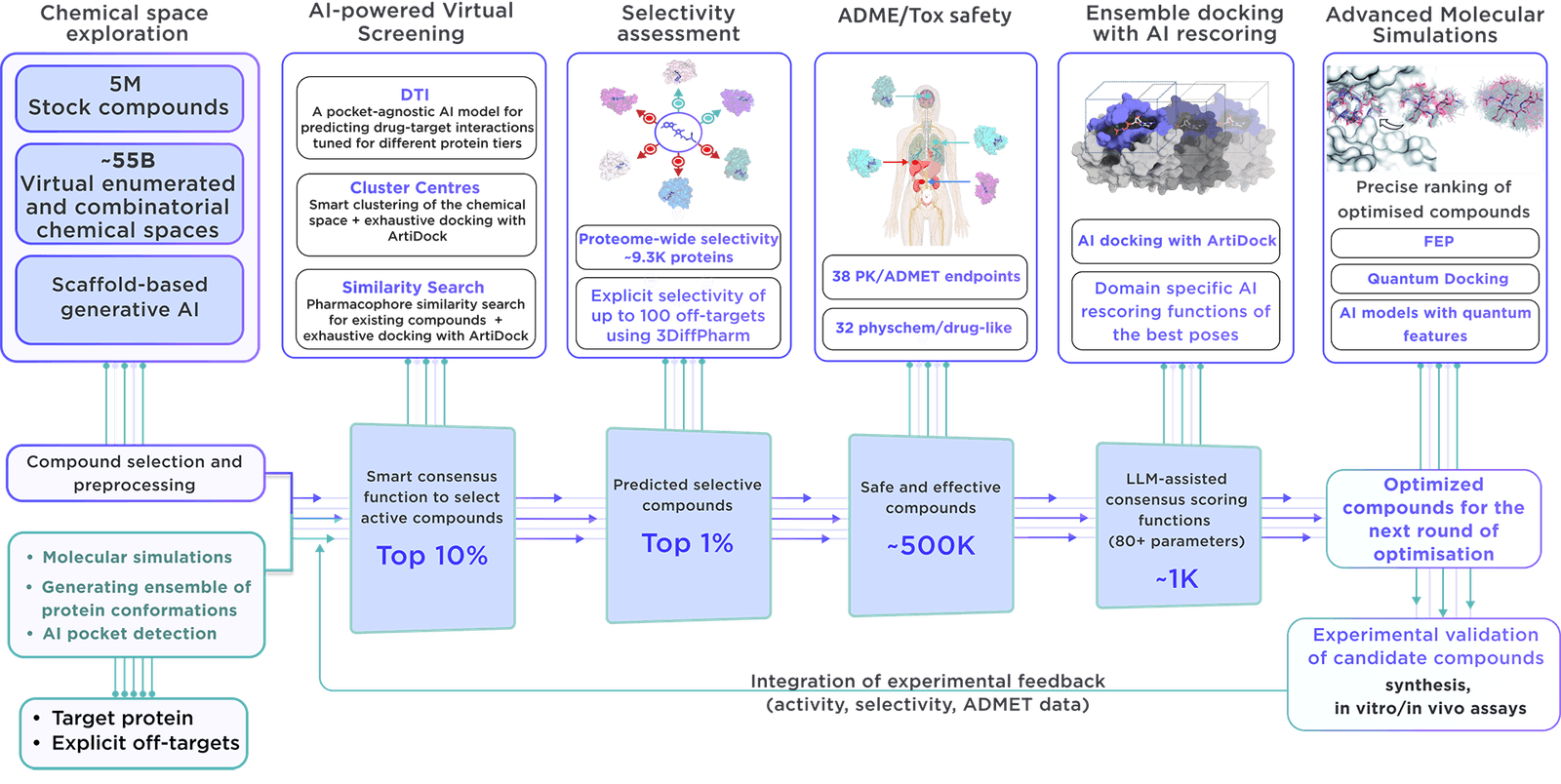Focused On-demand Libraries - Receptor.AI Collaboration
Explore the Potential with AI-Driven Innovation
The focused library is created on demand with the latest virtual screening and parameter assessment technology, supported by the Receptor.AI drug discovery platform. This method is more effective than traditional methods and results in higher-quality compounds with better activity, selectivity, and safety.
The compounds are cherry-picked from the vast virtual chemical space of over 60B molecules. The synthesis and delivery of compounds is facilitated by Reaxense.
The library includes a list of the most promising modulators annotated with 38 ADME-Tox and 32 physicochemical and drug-likeness parameters. Also, each compound is presented with its optimal docking poses, affinity scores, and activity scores, providing a comprehensive overview.
Our high-tech, dedicated method is applied to construct targeted libraries for enzymes.
The method includes detailed molecular simulations of the catalytic and allosteric binding pockets, along with ensemble virtual screening that considers their conformational flexibility. In the design of modulators, structural changes induced by reaction intermediates are taken into account to enhance activity and selectivity.
Key features that set our library apart include:
- The Receptor.AI platform integrates extensive information about the target protein, such as historical experiments, academic research, known ligands, and structural insights, thereby increasing the likelihood of identifying highly relevant compounds.
- The platform’s sophisticated molecular simulations are designed to discover potential binding sites, ensuring that our focused library is optimal for the discovery of allosteric inhibitors and binders for cryptic pockets.
- With over 50 customisable AI models, verified through extensive testing in commercial drug discovery and research, Receptor.AI is efficient, reliable, and precise. These models are essential in the production of our focused libraries.
- Receptor.AI not only produces focused libraries but also provides full services and solutions at every stage of preclinical drug discovery, with a success-based pricing structure that aligns our interests with the success of your project.
Receptor.AI
Q9BY66
UPID:
KDM5D_HUMAN
ALTERNATIVE NAMES:
Histocompatibility Y antigen; Histone demethylase JARID1D; Jumonji/ARID domain-containing protein 1D; Protein SmcY; [histone H3]-trimethyl-L-lysine(4) demethylase 5D
ALTERNATIVE UPACC:
Q9BY66; A2RU19; A6H8V7; B7ZLX1; Q92509; Q92809; Q9HCU1

